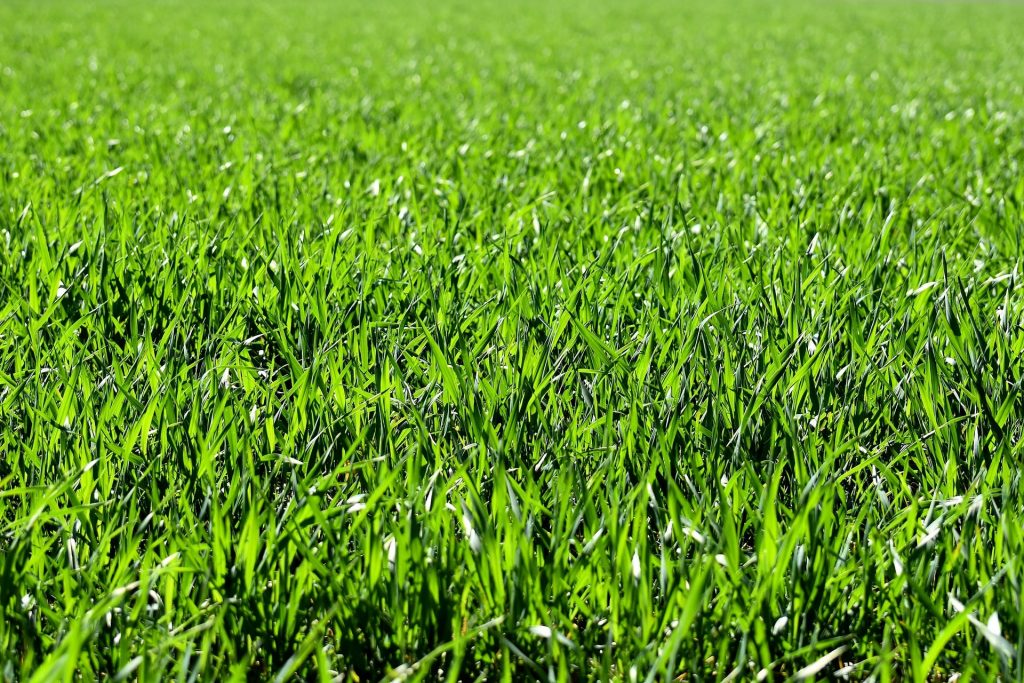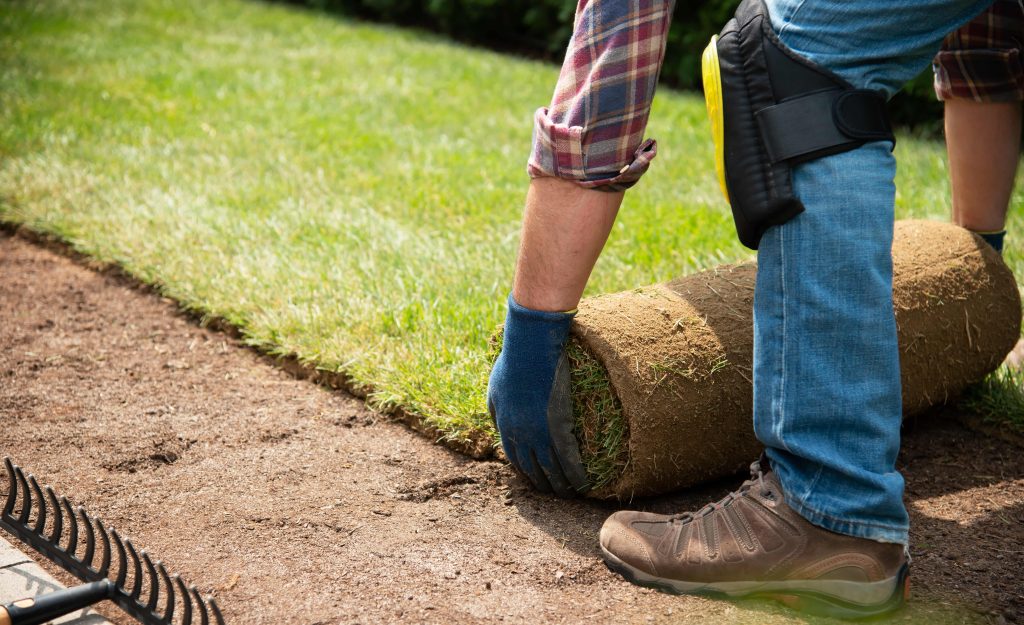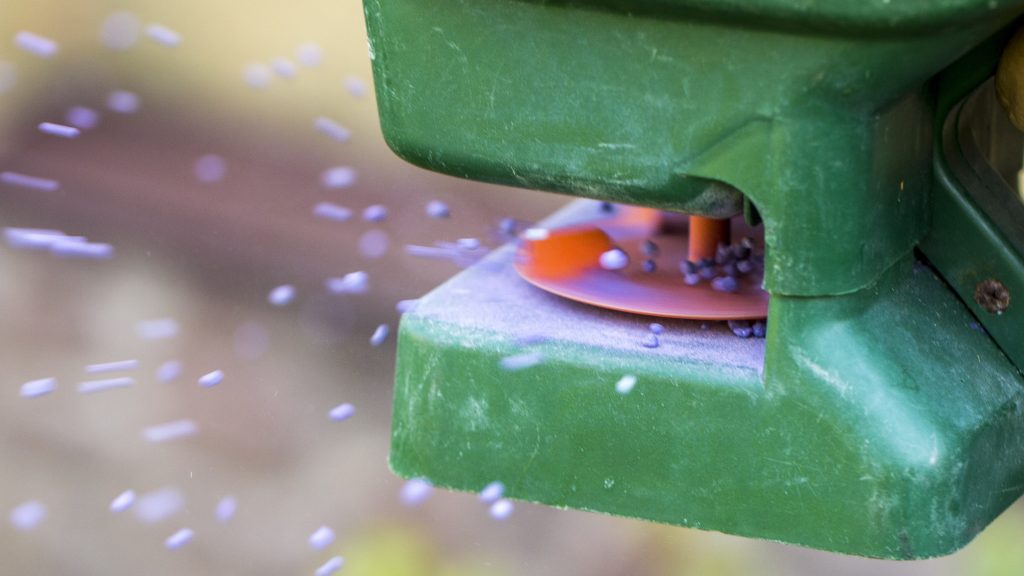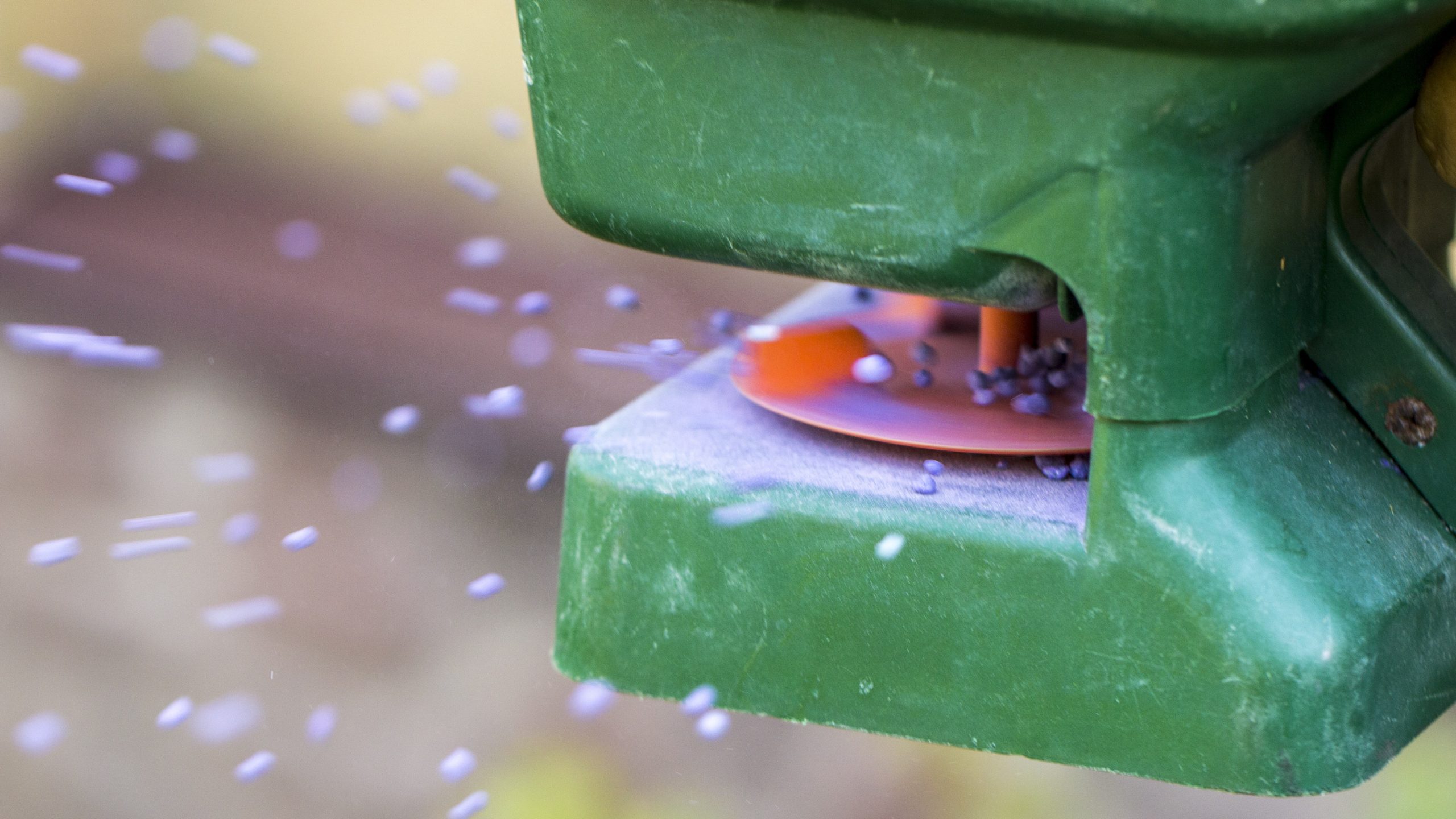If you’re thinking about adding fertiliser to your lawn, you might be wondering when’s the best time to do this – should you do it now, or wait until next year?
In this article, we’ve explained when to fertilise your lawn, to achieve the best results.
We’ve also explained what happens if you add the wrong type of fertiliser at the wrong time of year.
What to fertilise an existing lawn

The best time of year to fertilise your lawn is in the middle of spring, if you can, because this is when cool season grasses that we get in the UK begin to grow at their fastest. However, you can also apply fertiliser at other times of the year, except in the middle of winter, if you choose the right fertiliser.
For example, if you apply fertiliser in the autumn, ensure to get an autumn fertiliser. Otherwise, you will be adding unnecessary nitrogen to your grass, encouraging growth at the top of the plant, at the grass blades. This growth will soon be suffocated by the cold winter air.
Instead, in the autumn, you want to focus on improving root system growth, to prepare your lawn for the winter. This is why autumn fertilisers often contain greater levels of phosphate and potassium, compared to nitrogen – these chemicals help to stimulate the growth of rhizomes and stolons, as well as your lawn’s roots, helping it to have a healthier base.
When to fertilise a new lawn

If you’re starting a lawn from scratch, you should apply fertiliser no matter what time of year it is. This is because new lawns can benefit from added nitrogen, and other chemicals such as phosphorous, at nearly all times of the year.
Plus, new lawns need to begin growing immediately, in order to establish themselves in the soil. This is why you shouldn’t try to start a new lawn right before the beginning of winter.
- When sowing grass seed, it’s a good idea to fertilise the lawn before you sow the seeds. This gives the seeds a nice nutrient bed on which to grow.
- When laying new turf, you can buy specialised pre-turfing fertiliser, which you rake into the ground prior to laying down the turf. If you haven’t applied pre-turfing fertiliser, you should add fertiliser after about four weeks, once your lawn has had the chance to take hold.
How often should you fertilise your lawn?
On most lawns, you can get away with fertilising it once a year, in the mid-spring. This will help your grass to make the most of the weather warming up, allowing it to enter the summer at its healthiest, ready for everything your kids and pets can throw at it.
However, if you like, you can fertilise your lawn more often, up to four times a year. You might like to do this if you have an ornamental lawn, and really like to keep it looking at its best. Or, you might want to make your lawn grow as thick and as dense as possible, which can help it to better withstand foot traffic without bare patches forming.
If you want to take a more hands-on approach, and fertilise more often, you should do your first application of fertiliser in the mid-spring. Then, do one or two in the summer, and one final one in the middle of autumn.
Just ensure to use the correct fertiliser mix for the time of year. Otherwise, as we mentioned above, you might scorch your lawn, or stimulate growth in the wrong parts of the grass plant, given the time of year.
What happens if you fertilise your lawn at the wrong time of year?

If you fertilise your lawn at the wrong time of year:
- You might stimulate growth that will eventually fail, most likely due to cold weather. Essentially, your fertiliser will be wasted.
- You might burn your lawn, especially if you’ve applied fertiliser recently. This occurs when too much nitrogen is added to the lawn at once, and results in your lawn going brown or yellow in patches.
Other than wasting fertiliser, it’s not normally a huge deal if you add the wrong type of fertiliser at the wrong type of year. However, it can stress out your grass a bit.
The main thing to be careful of is adding too much fertiliser to your grass. This is the thing that has the highest likelihood of damaging or killing your lawn.

I’m Josh, and I’m the head writer at Lawn Care Pro.
I love everything lawns, but I’m a bit of a lawn mower nerd. I spend a lot of my free time tinkering with mowers, and planning my mowing schedule for the next few weeks.
I’m also into cars, which comes in very helpful when servicing a mower engine!

